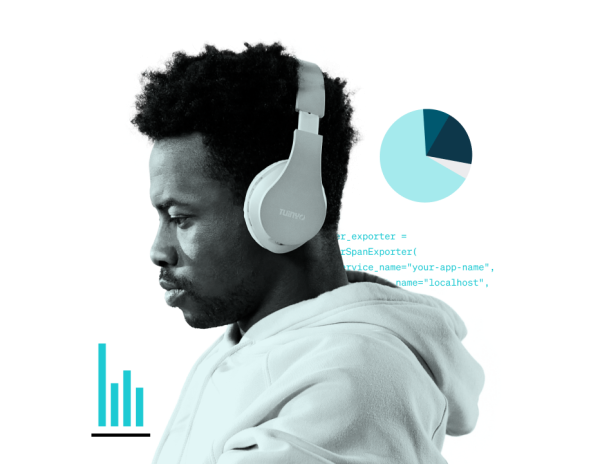Next, we look at the preference for a single, consolidated platform or multiple point solutions, the strategies and trends driving the need for observability, the most important drivers of OpenTelemetry adoption and usage, the level of advocacy for observability among different groups, and whether observability is more of a key enabler to achieving core business goals or for incident response/insurance.
Strategy and organization highlights:
Single platform or multiple point solutions preference
What are the strategic preferences of organizations when it comes to the number of tools they use for observability? Do they prefer a single, consolidated observability platform or multiple point/best-in-class solutions that are often cobbled together or used only for specific monitoring capabilities? We found that:
- More than half (54%) preferred a single, consolidated platform to some extent (increased 15% YoY).
- More than a quarter (29%) preferred multiple point solutions to some extent (decreased 14% YoY).
- Just 16% had no preference.
preferred a single, consolidated platform
Role insight
ITDMs were more likely to prefer a single, consolidated platform (57%) than practitioners (52%).
Regional insight
Respondents from the Asia-Pacific region were the most likely to prefer multiple point solutions (38%), compared to those from Europe (23%) and North America (19%).
Organization size insight
Large organizations tend to have more tools and small organizations fewer, but both are more likely to prefer a single, consolidated platform.
Industry insight
Those from services/consulting were the most likely to prefer a single, consolidated platform (65%), followed by those from healthcare/pharma (58%). Those from energy/utilities and nonprofits were more likely to prefer multiple point solutions.
Trends driving observability
What technology strategies and trends are driving the need for observability? We found that:
- Nearly half (49%) said an increased focus on security, governance, risk, and compliance, making it the top choice two years in a row.
- About two in five (38%) said the integration of business apps into workflows and the adoption of artificial intelligence (AI) technologies (both new options this year).
- Aside from security, 2023 respondents were much less likely to say that the repeated 2022 options were drivers.
Role insight
ITDMs were much more likely to say security is a driver (56%) than practitioners (46%).
Regional insight
Asia Pacific was much more likely to see the rise of cutting-edge technologies like AI, IoT, CDN, open-source, and serverless as drivers.
Organization size insight
Those from large organizations were generally more likely to select every trend.
Industry insight
Observability drivers varied greatly by industry.
OpenTelemetry drivers
We were also curious about the most important drivers of OpenTelemetry adoption and usage in long-term observability strategies. We found:
- About half said scalability (52%) and the fact that it integrates with their existing tool stack (46%).
- More than a third cited observability licensing costs (37%) and portability (36%).
- Around a quarter noted being an open-source champion (26%) and no vendor lock-in (21%).
- Only 4% were not adopting OpenTelemetry.
- Just 2% didn’t know what OpenTelemetry is.
Role insight
ITDMs were more likely to say scalability is an important driver (56%) than practitioners (49%).
Regional insight
Those surveyed in North America were more likely to say they aren’t adopting OpenTelemetry and that they don’t know what it is.
Organization size insight
Large organizations were more likely to cite scalability and integration with their existing tool stack as top drivers.
Industry insight
Those in the services/consulting industry were the most likely to say they aren’t adopting OpenTelemetry (7%).
Advocates of observability
We asked survey participants to rate the varying levels of observability advocacy among several roles in their organizations. Notable findings include:
- The average level of advocacy across all roles is 68%, which is about the same as in 2022.
- On average, 70% saw C-suite executives as advocates, including 31% as strong advocates.
- The more technical-focused C-suite executives were seen as having the highest level of strong advocacy and advocacy in general (36% and 76% respectively), followed by IT engineers (34% and 75% respectively).
- Almost two-thirds (64%) saw the less technical-focused C-suite executives as advocates for observability—a decrease of 14% YoY.
- Overall, there was 47% lower resistance to observability YoY—only 4% on average compared to 7% in 2022—with SREs seen as the most resistant (but even this is minimal at 5%).
Those with full-stack observability or a mature observability practice by our definitions were once again notably more likely to have strong observability advocates than those without those two things.
Respondents whose organizations saw observability completely as an enabler of core business goals once again indicated notably higher levels of strong advocacy for observability in nearly every role.
saw the technical C-suite executives as advocates of observability
Role insight
Executives say the more technical-focused C-suite executives are strong advocates to an unusually high degree (54%).
Purpose of observability
We were curious about whether the perceived purpose of observability changed this year: Do practitioners and IT decision makers (ITDMs) see observability as more of a key enabler for achieving core business goals or more for incident response/insurance? We found that:
- Two in five (40%) thought observability is more of a key enabler for achieving core business goals—a 21% decrease YoY.
- About a third (32%) indicated that observability enables business goals and incident response equally in their organizations—a 14% increase YoY.
- More than a quarter (26%) said observability is more for incident response/insurance—a 23% increase YoY.
Collectively, 71% said observability is a key enabler to achieving their organization’s core business goals to some extent, compared to 78% in 2022. While 57% said it’s for incident response/insurance to some extent, compared to 49% in 2022.
Notably, respondents who saw observability as more for core business goals were more likely to prefer a single, consolidated platform: Of the 672 respondents who indicated that observability is more for core business goals, 63% preferred a single, consolidated platform, compared to 27% who preferred multiple point solutions.
said observability is for core business goals to some extent
Role insight
Executives and practitioners were the most likely to say it’s more for core business goals, while non-executive managers were the most likely to say it’s more for incident response/insurance.

